
Sonia Mutreja

Pooja Parvatkar
Semiconductor Sector’s Top 5 Emerging Markets in Q1 2024: Allied Market Research’s Comprehensive Analysis

The semiconductor sector is undergoing a transformative phase driven by technological advancements, increasing demand for connected devices, and the emphasis on sustainability. Companies within this sector are redefining their strategies to navigate through this evolving landscape, adapting to changing dynamics and regulatory frameworks. AMR has identified the top 5 emerging markets in the semiconductor sector for the 1st quarter of 2024, shedding light on areas with promising growth prospects and investment potential.
Leveraging AMR’s 'Title Matrix Tool', research analysts have meticulously assessed these markets based on various predefined parameters. These parameters include factors such as relevance, growth potential, technological innovation, customer demand trends, competitive landscape, and regulatory environment.
The reports endeavor to address critical industry queries, including current size and revenue projections, catalysts propelling growth, strategies embraced by major players, impediments and potential risks, regional dynamics, and competitive positioning. Moreover, they integrate historical data and retrospective analysis to furnish a holistic perspective on trends and trajectories.
Outlined below are the top 5 emerging markets propelling innovation, meeting pressing technological demands, and shaping the future trajectory of the semiconductor sector.
IoT Chips
The IoT chip industry emerges as the forefront leader, scoring highest among all. This is primarily attributed to the escalating demand for connected devices across diverse industries encompassing healthcare, consumer electronics, industrial, automotive, banking financial services & insurance, and retail. Moreover, the surge in demand for IoT chips is fueled by rapid technological advancements, notably in AI and 5G, which are revolutionizing various sectors, fostering innovation, and unlocking opportunities across smart homes, healthcare, transportation, and industrial applications. As a result, the IoT chips market is poised for substantial growth, with projections indicating a CAGR of 14.3% from 2023 to 2032. The IoT chip technology holds strategic importance for research due to its pivotal role in powering the rapidly expanding ecosystem of connected devices across multiple industries.
The report offers a comprehensive Market Share Analysis of the top players. Furthermore, regional insights reveal notable shifts in revenue share, with regions like Asia-Pacific, particularly China, emerging as significant contributors to growth. Additionally, the report sheds light on the strategies adopted by leading companies, such as product launches and acquisitions, to bolster their position and gain a competitive edge. By leveraging these insights, stakeholders can devise tailored strategies to capitalize on emerging opportunities and navigate competitive challenges within the dynamic IoT chip market landscape.
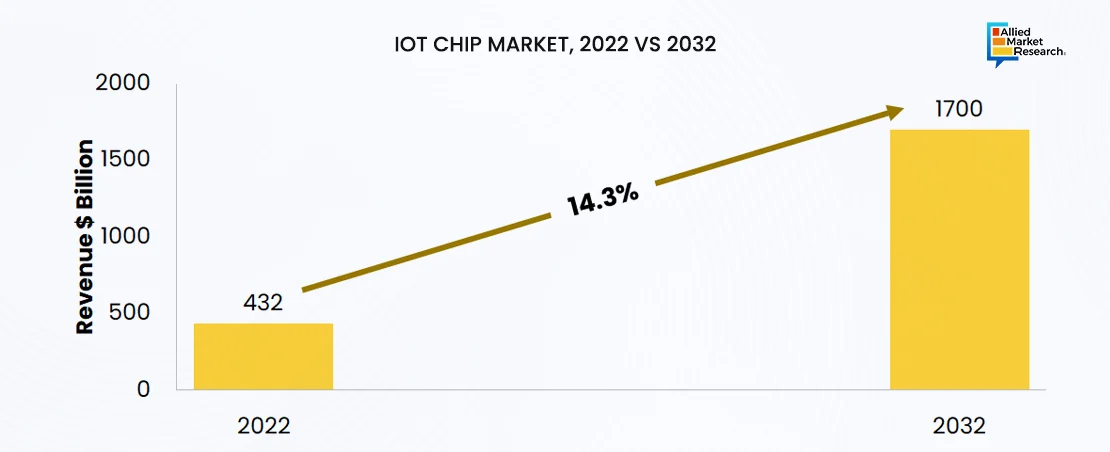
Industry 5.0
By 2032, the global industry 5.0 market is forecasted to experience a nearly 4.9 times growth compared to its 2022 size, growing with a CAGR of 17.3% from 2023 to 2032. This exponential expansion is attributed to technological advancements in artificial intelligence, robotics, and the Internet of Things, facilitating seamless collaboration between humans and machines and driving the adoption of Industry 5.0 principles. Additionally, initiatives aimed at promoting digital transformation and evolving from Industry 4.0 set the stage for widespread implementation of Industry 5.0 practices, thereby fostering rapid expansion. The industry 5.0 industry holds strategic importance for research at present due to its pivotal role in shaping the future of industrial processes and fostering innovation across various sectors.
The report offers PESTLE analysis presenting a tailored overview of the external factors influencing its growth trajectory. Political factors, such as government initiatives promoting digital transformation, play a pivotal role in driving market expansion. Economic factors, including GDP growth rates and investment trends, underscore the economic incentives driving Industry 5.0 adoption. Social factors, such as workforce demographics and cultural attitudes towards technology, shape the pace of adoption and market acceptance. Technological advancements in AI, robotics, and IoT drive market evolution, while legal frameworks ensure regulatory compliance and ethical deployment. Environmental considerations, including sustainability and resource conservation, influence the development of Industry 5.0 solutions aligned with environmental goals. This comprehensive analysis equips stakeholders with insights to navigate dynamics and capitalize on emerging opportunities in the rapidly evolving landscape of industrial transformation.
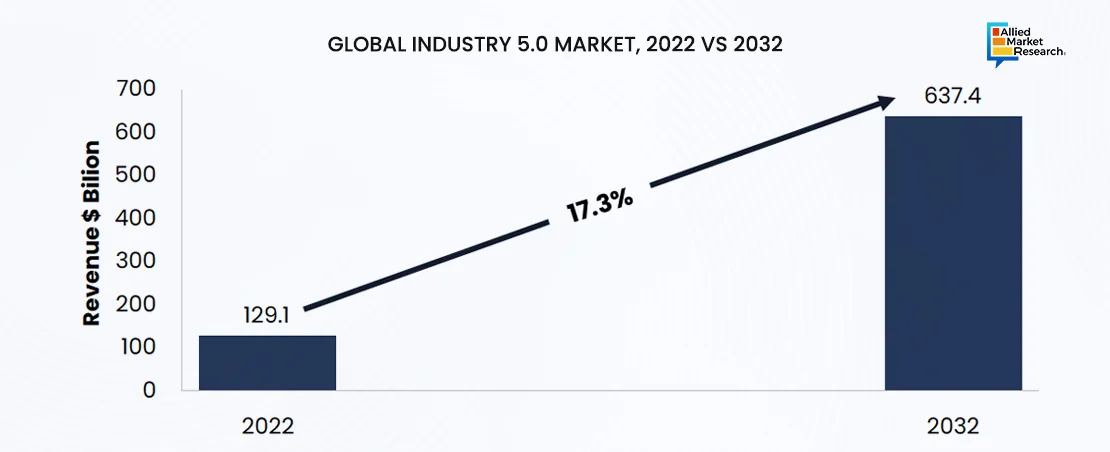
Quantum Sensors
The quantum sensor industry is poised for significant growth mainly due to increased investment in space communication and the expansion of satellite networks. Furthermore, rising demand for high-precision measurement devices integrated with quantum sensors across sectors like agriculture, defense, and healthcare is expected to fuel market expansion. The global market is expected to hit $1.11 billion by 2032, growing at a CAGR of 14.07% from 2023 to 2032. The technology is strategically important to research right now due to its potential for disruptive innovations in various sectors and the increasing demand for high-precision measurement devices.
The report offers an insightful analysis of Porter's five forces analysis of the quantum sensor market. Established leaders such as Robert Bosch GmbH and Microchip Technology hold considerable reputation due to their technological prowess and established market positions. However, the entry of new players is hindered by the specialized nature of quantum sensor technology, coupled with significant initial investment requirements and the need for advanced technical capabilities. Additionally, the bargaining power of buyers is relatively high, particularly in sectors like defense and healthcare, where demand for precision measurement devices is substantial. Meanwhile, the threat of substitutes is mitigated by the unique capabilities offered by quantum sensors, which enable unprecedented levels of accuracy and sensitivity in measurement applications.
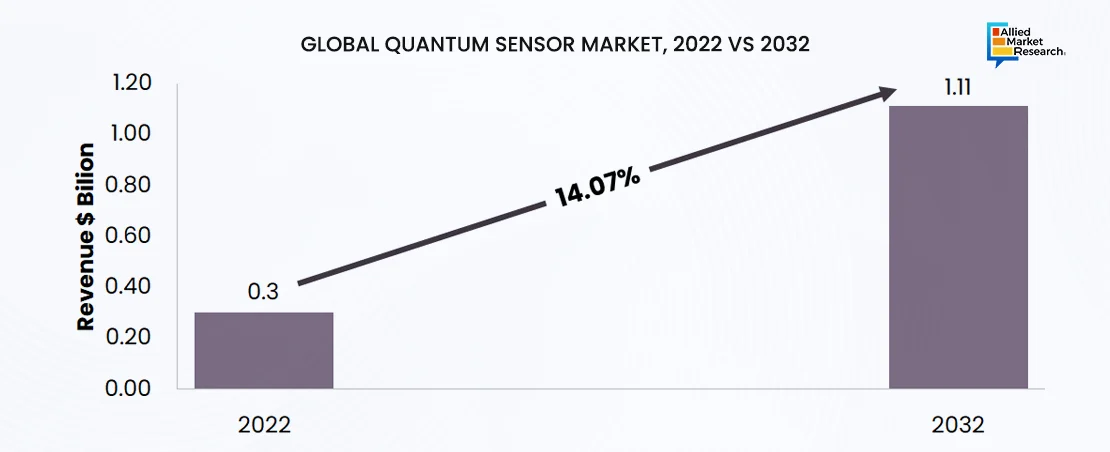
Mobile Robotics
The mobile robotics market is forecasted to hit $130.9 billion by 2032, with a CAGR of 23.1% from 2023 to 2032. Mobile robots play a crucial role in healthcare settings by undertaking tasks such as medication and supply delivery, equipment transportation, and patient monitoring and assistance within hospitals and care facilities. These robots alleviate the workload of healthcare staff, enhance operational efficiency, and improve overall patient care quality. The incorporation of cutting-edge technologies such as AI, machine learning, sensors, and computer vision significantly enhances the functionalities of mobile robots, thereby propelling the growth of the mobile robotics market. The technology is strategically important to research right now due to the rapid advancements in technology and increasing adoption of automation across diverse industries, driving significant growth opportunities.
The report offers a comprehensive segmentation analysis of the mobile robotics industry, categorizing it based on application, product, component, and region. In terms of application, logistics and warehousing dominate the industry, driven by the need for automation in material handling tasks. Product-wise, unmanned aerial vehicles (UAVs) hold the largest market share, fueled by investments in public transport and healthcare support. Component-wise, hardware components lead the market, with sensors and actuators playing key roles in robot functionality. Regionally, while North America currently leads in revenue, Asia-Pacific is expected to witness the highest growth rate, particularly driven by China's rapid industrialization and automation investments.
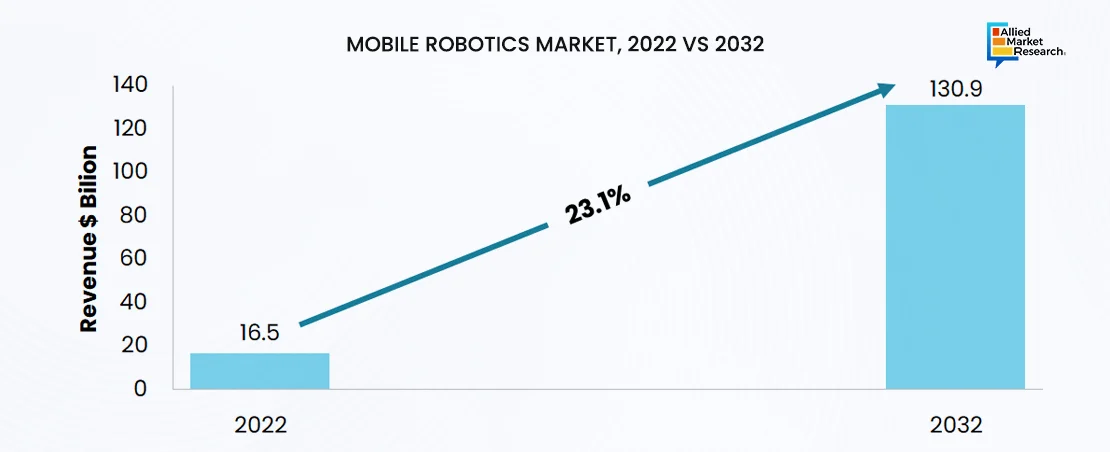
Flexible Battery
The expansion of the electronics sector and advancements in technology have spurred the integration of flexible batteries into electronic devices owing to their lightweight nature, comfort, portability, and ability to maintain shape integrity despite bending or twisting. Furthermore, the increasing need for smart cards, which are largely dependent on batteries, and their utilization in healthcare for medical patches to track health metrics and deliver medication, play a substantial role in driving the expansion of the flexible battery market. By 2032, the flexible battery market is projected to reach $1.5 billion, fueled by these factors and the evolving needs of consumers for innovative and adaptable electronic solutions. The technology is strategically important to research right now due to its projected growth trajectory and increasing integration into various electronic devices, driven by advancements in technology and evolving consumer demands.
The report offers a comprehensive overview of regional analysis within, highlighting key trends and growth drivers across different geographical regions. In North America, particularly the U.S., the industry witnessed significant revenue generation in 2022, attributed to the rising demand for wearable electronics and advancements in flexible battery technologies. Meanwhile, Europe, led by Germany, showcased dominance in the market share, driven by a strong focus on innovation and a growing market for wearable electronics and flexible devices. The Asia-Pacific region, spearheaded by China, emerged as a pivotal player, fueled by technological advancements and a substantial demand for flexible batteries in consumer electronics.
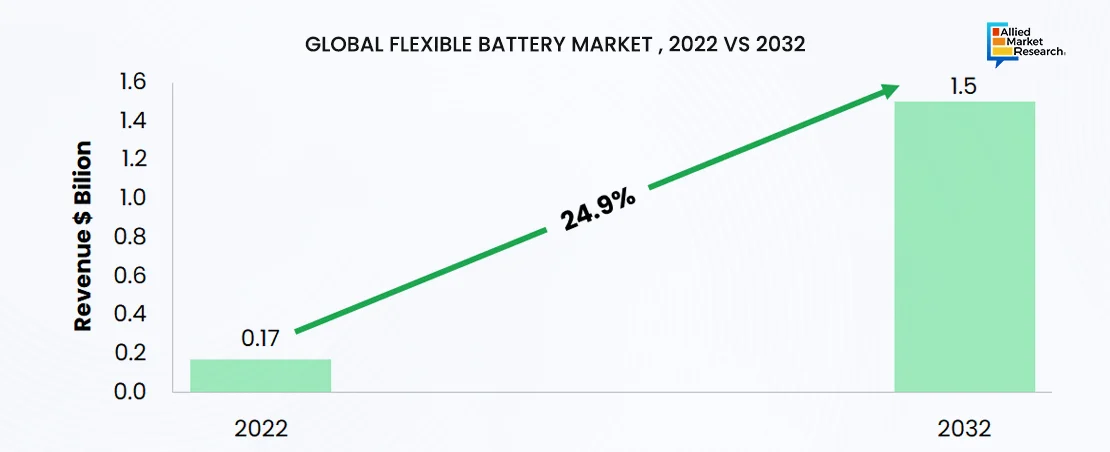
The Bottom Line
These reports on top 5 emerging markets serve as invaluable resources for stakeholders navigating the dynamic landscape of the semiconductor sector. By identifying emerging markets and providing comprehensive analyses of key trends, growth drivers, and competitive landscapes, AMR equips industry players with actionable insights to inform strategic decision-making and capitalize on lucrative opportunities. To leverage these insights and stay abreast of developments, contact Allied Market Research analysts today.

